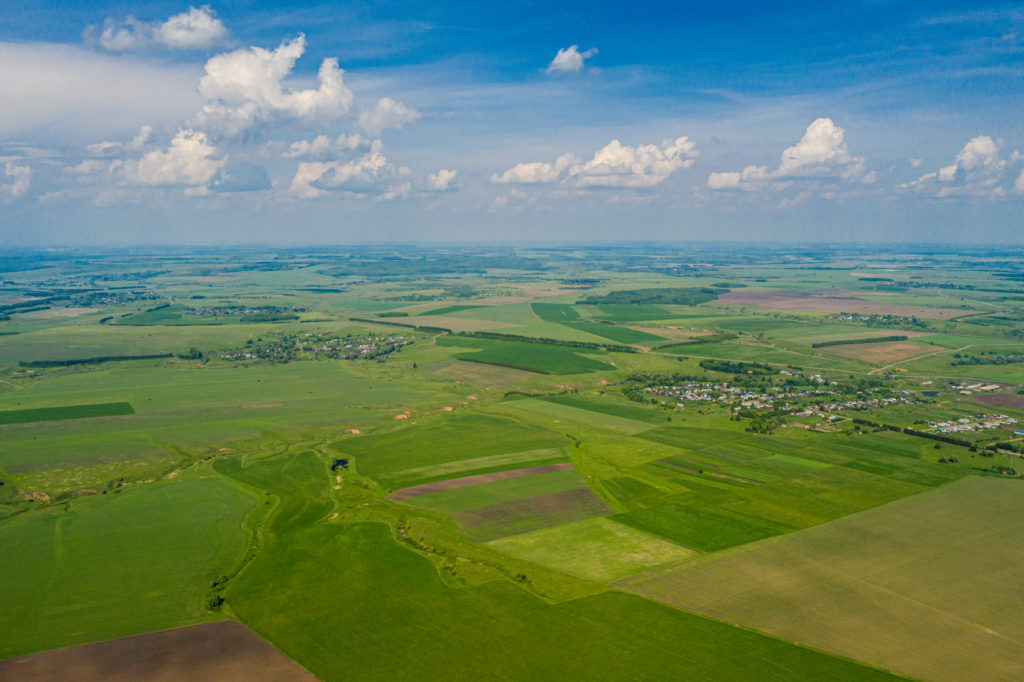If you own any property that either you currently live on or you bought as an investment, you may have wondered if there is anything you can do with your land besides deciding to just sell it for a higher price than the price you paid for it. This is a situation where knowing about land subdivision may be helpful.
Land subdivision is the splitting up of a single parcel of land into two or more smaller parcels of land. When you already own a piece of property (or decide to purchase a new piece of land) that you decide you would like to divide into smaller pieces (or lots), you are wanting to subdivide your land.
Subdividing your land involves the creation of a subdivision plan which would then most likely have to be recorded at a local Recorder of Deeds office. This recorded plan is what makes official the new layout of your smaller lots for the public to see.
Reasons Why Someone Would Want to Subdivide Land
There are different reasons you might want to subdivide property. Here are just a few example scenarios for when you might decide that it is a good idea to subdivide land.
1) You live on a large property that you would like to subdivide to earn money from selling the vacant land parcels you could create and you would like to be able to still live in your current house. Your house would just be on a much smaller lot.
2) You would like to subdivide the property, where you currently live, into smaller lots. At the same time of the subdivision, you can develop the land with new houses that you can then sell for a profit. You could stay in your current house as long as you would not mind living on a smaller lot.
3) You would like to subdivide your property, where you currently reside, into smaller lots that you plan to keep for a while. Even though you would still own all of the new lots as well as the lot that contains your current house, you would now have the ability to sell them at a later date as a source of extra money.
4) You are a land developer who was able to get a good deal on a piece of land that you now want to subdivide into smaller lots that you can turn into a new residential development where you can sell the developed lots for a profit.
Related: 5 Common Reasons Why You Might Want to Subdivide Land
Government Regulations Can Limit How You Choose to Subdivide Your Land
You can’t just choose at random how you want the proposed lot layout for your land subdivision to look. Depending on the municipality where your property to be subdivided is located, there may be many regulations listed in the municipality ordinances that have to be met before a proposed land subdivision can be approved for recording.
Related: What Is a Subdivision Ordinance?
Related: What Is a Zoning Ordinance?
Examples of elements of a land subdivision that can be regulated include minimum lot area, minimum yard setback distance, and maximum impervious area (for the case where you would want to subdivide a property that has existing impervious areas on the site).
Something else to consider is the amount of new impervious area that you think might be proposed for each lot after the subdivision. The reason for this is to be sure that the new lots you create are large enough to account for the new impervious areas with regard to the maximum amount of total impervious area that would be allowed for each lot.
Also, the regulations can vary depending on the zoning district within which your property is located.
The complexity of these ordinances would normally require the hiring of a land surveying company or a civil engineering company to create a land subdivision plan for you that would meet the requirements of the municipality.
Many civil engineering companies combine the services of both land surveying and land development engineering. Using one of these kinds of companies with combined services would be a good idea if you plan on developing any of the new lots that you would be creating.
Advertisement
The Subdivision Plat
A subdivision plat is the plan that is the result of a proposed land subdivision.
This is the drawing that your surveying company or civil engineering company would have to create to be reviewed and approved by the municipality before the subdivision of your property can be recognized as official.
Related: What Is a Subdivision Plat and Why Are Plats Important?
The Complexity of Land Subdivision Projects
The level of complexity of a land subdivision project can vary greatly depending on the municipality, the size of the original land parcel being subdivided, and the intent of the person wanting to subdivide.
Some municipalities will have more requirements to be met for plan approval than those of other municipalities. These extra requirements could lead to more time and effort being required to obtain final plan approval.
A land subdivision can be as small as a one-acre lot being subdivided into two half-acre lots. A land subdivision can also be as large as a 100-acre lot being turned into what would eventually become a 50-lot residential land development. A larger number of lots being created would lead to a longer time frame required for plan approval.
Using the previous example, if the person wanting to subdivide a property into 50 lots wants a land development plan to be designed for the residential development at about the same time that the subdivision plan is created, the time required for final plan approval would be much longer than the time required for the approval of just a subdivision plan.
The extra time involved with the more complex subdivisions would also mean higher costs involved with the creation and approval of the associated land subdivision plans.
Related: The Land Subdivision Process (In 9 Steps)
Do Not Confuse Land Subdivision With a Neighborhood Subdivision
There are times when you might hear someone refer to a residential development as just a subdivision or a neighborhood subdivision. The reason for this is most likely because the original design of the overall development probably did at one time involve a major subdivision of a large land parcel to obtain the new individual residential lots.
However, one could argue that a “land subdivision” and a “neighborhood subdivision” (the way it is commonly used) are technically two different things. Land subdivision is the actual dividing of land into smaller pieces of land. A neighborhood subdivision usually refers to a specific residential area or neighborhood that was the result of a land subdivision.
Advertisement
The Difference Between Land Subdivision and Land Development
Land subdivision and land development are associated in certain ways, but they are very different. Land subdivision is the dividing of land whereas land development is obviously the development of land.
You can have a land subdivision without a proposed land development. You can also have a proposed land development without a proposed land subdivision (an example being a proposed commercial building construction project on an existing single lot).
You can also have a proposed land subdivision with a proposed land development. A good example would be a case in which a large parcel of land is being subdivided into many lots for a new residential development where the lots would be developed and constructed all at once and soon after the plans are approved.
Related: What Is Land Development and What Is Involved?
Land Subdivision Can Give You Options
Choosing to subdivide your property can give you some good options for how to use to your land. You just have to carefully consider the different options for doing so. Hiring the right professionals to create and present those options to you would be one of your first steps to creating your land subdivision plan.
Related: 5 Common Terms Used in Land Subdivision



